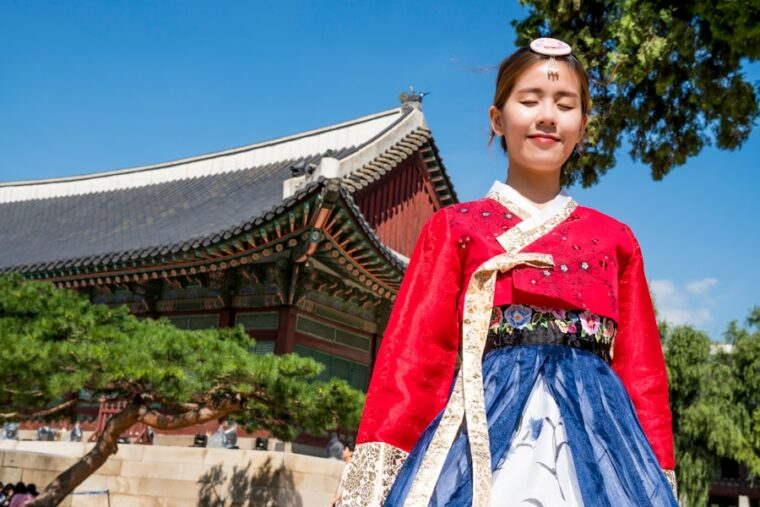South Korea, officially known as the Republic of Korea, is a vibrant and dynamic country located in East Asia. It is known for its rich history, stunning landscapes, and bustling cities. South Korea is a popular destination for travelers seeking a unique blend of traditional culture and modern innovation. The country is home to a population of over 51 million people and has a land area of approximately 100,000 square kilometers. South Korea is bordered by North Korea to the north, the Yellow Sea to the west, the Sea of Japan to the east, and the Korea Strait to the south. The capital city of South Korea is Seoul, which is a bustling metropolis known for its skyscrapers, shopping districts, and vibrant nightlife.
Top Attractions and Landmarks in South Korea
South Korea is home to a wide range of attractions and landmarks that cater to all types of travelers. One of the most iconic landmarks in South Korea is the Gyeongbokgung Palace, which is located in Seoul. This grand palace was built in 1395 and served as the main royal palace of the Joseon dynasty. Visitors can explore the palace grounds, admire the traditional architecture, and learn about the history of the Korean royal family. Another must-see attraction in South Korea is the stunning Jeju Island, which is known for its volcanic landscapes, beautiful beaches, and lush countryside. Jeju Island is a popular destination for outdoor enthusiasts, offering activities such as hiking, horseback riding, and water sports. Additionally, the bustling city of Busan is home to Haeundae Beach, one of the most famous beaches in South Korea. Visitors can relax on the sandy shores, swim in the clear waters, and enjoy a variety of water sports.
Exploring South Korea’s Rich Culture and History
South Korea has a rich and diverse culture that is deeply rooted in tradition and history. One of the best ways to experience South Korean culture is by visiting one of the many traditional villages scattered throughout the country. These villages offer a glimpse into the past, with well-preserved hanok houses, traditional crafts, and cultural performances. One such village is Hahoe Folk Village, which is located in Andong. This UNESCO World Heritage site is known for its traditional architecture and cultural heritage. Another important aspect of South Korean culture is its traditional music and dance. Visitors can attend performances of traditional Korean music, known as “gugak,” or watch a mesmerizing dance performance known as “samulnori.” Additionally, South Korea is home to a thriving contemporary art scene, with numerous galleries and museums showcasing both traditional and modern artwork.
South Korean Cuisine and Culinary Experiences
South Korean cuisine is renowned for its bold flavors, unique ingredients, and diverse dishes. One of the most popular Korean dishes is kimchi, which is a fermented vegetable dish that is served as a side dish with almost every meal. Other popular Korean dishes include bibimbap, a mixed rice dish with vegetables and meat; bulgogi, marinated grilled beef; and samgyeopsal, thick slices of pork belly that are grilled at the table. Visitors to South Korea can also enjoy a wide range of street food, such as tteokbokki (spicy rice cakes), hotteok (sweet pancakes), and gimbap (seaweed rice rolls). In addition to enjoying traditional Korean cuisine, travelers can also participate in culinary experiences such as cooking classes and food tours. These experiences provide an opportunity to learn about Korean cooking techniques, ingredients, and flavors.
Outdoor Adventures and Natural Wonders in South Korea
South Korea is home to a diverse range of natural wonders and outdoor adventures that cater to nature lovers and adventure seekers. One of the most popular outdoor activities in South Korea is hiking, with numerous trails and national parks scattered throughout the country. One of the most famous hiking destinations in South Korea is Seoraksan National Park, which offers stunning mountain views, lush forests, and crystal-clear streams. Visitors can also explore the picturesque Nami Island, which is known for its beautiful tree-lined paths, serene lakes, and scenic landscapes. For those seeking more adrenaline-pumping activities, South Korea offers opportunities for rock climbing, paragliding, and white-water rafting. Additionally, visitors can relax and rejuvenate at one of South Korea’s many hot springs and spas, which are known for their healing properties and tranquil settings.
Transportation and Accommodation Options in South Korea
South Korea offers a variety of transportation options for travelers looking to explore the country. The most popular mode of transportation within cities is the efficient and extensive subway system. Seoul’s subway system is one of the most advanced in the world, making it easy for visitors to navigate the city and reach popular attractions. For longer distances, travelers can take advantage of South Korea’s high-speed train network, which connects major cities such as Seoul, Busan, and Gwangju. Additionally, South Korea has a well-developed bus network that provides access to more remote areas of the country. When it comes to accommodation options, South Korea offers a wide range of choices to suit every budget and preference. Visitors can choose from luxury hotels, boutique guesthouses, traditional hanok stays, or budget-friendly hostels.
Tips for a Smooth and Enjoyable South Korean Travel Experience
To ensure a smooth and enjoyable travel experience in South Korea, there are several tips that travelers should keep in mind. Firstly, it’s important to familiarize yourself with Korean customs and etiquette to show respect for the local culture. For example, it’s customary to bow when greeting someone and to remove your shoes before entering someone’s home or certain establishments. Additionally, learning a few basic Korean phrases can go a long way in making connections with locals and navigating daily interactions. It’s also important to be mindful of cultural differences when dining in South Korea. For example, it’s polite to wait for the eldest person at the table to start eating before beginning your meal. Lastly, travelers should be aware of local customs and traditions when visiting temples or other religious sites.
In conclusion, South Korea offers a diverse range of experiences for travelers seeking a unique blend of tradition and modernity. From exploring ancient palaces and traditional villages to indulging in bold flavors of Korean cuisine and embarking on outdoor adventures in stunning natural landscapes, there is something for everyone in this captivating country. With its efficient transportation options and diverse accommodation choices, South Korea provides an ideal setting for an unforgettable travel experience. By embracing local customs and etiquette while being open to new experiences, travelers can immerse themselves in the rich culture and history of South Korea while creating lasting memories.


